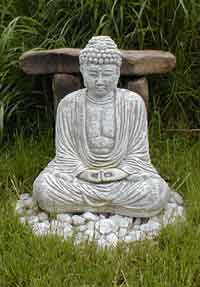
How To Meditate - MindfulnessMeditative forms are legion. By the broadest definition, anything which centres our awareness on the present moment and allows us to remain there to the relative exclusion of active thinking, can be used as a meditation. Of these many forms, some would argue that Vipassana, or mindfulness meditation, is amongst the most subtle and effective: one approch is to simply allow your awareness to fall upon the natural rhythm of breathing. Because the body is always present in the moment, being aware of the body’s breath centres us likewise. The breath is always with us, always present to provide us focus regardless where we are or what we are engaged in and that makes it a wonderful and effective gift for the meditator. At the same time, its pervasiveness and the subtleness of this form of meditation make it a challenging practice for many. Wonderful benefits await the persistent practitioner, however. Eastern practitioners of the mind-body arts often speak of the mind as having two natures: the Doing Mind and the Being Mind. The Doing Mind can be thought of as the a workhorse that is charged with the executive function of attending to life’s needs. It largely consists of thoughts and images, with an interplay of emotions. It reflects on the past and projects into the future, all in the name of keeping us safe and warm and happy. At the same time, it removes our awareness from the present moment, which is the only place in time that is real and in which we can act. Accordingly, by virtue of being busy trying to do right by ourselves, we can become detached from the greatest gift and most powerful experience available: present moment awareness. The Doing Mind is, for the most part, nothing more than a highly complex array of conditioned reflexes, a product of our experiences. By contrast, the Being Mind exists largely as a state of pure awareness. It is without thought and reflection; it is simply being. The main benefit of meditation appears to be that is allows us to take a break from the seductive domination of the Doing Mind and to sit for a while in the purity of awareness. By virtue of this, we can become more conscious of the world as it really is, and reconnect with our true selves. It can also be said that the only place effective action can occur, the only place change and healing can happen, is in the present moment. The more we are disconnected from it, the less vital and joyful we tend to feel. The more connected we remain to it, the greater our joy and effectiveness. For a more extensive discussion of this, however, please refer to the “Benefits of Meditation” article. So how does meditation work? It is usually helpful to think of the Doing Mind as being like a shy and excitable monkey. Left to itself, it will tend to jump from branch to branch (thought to thought) in a never ending flurry of mental activity, seduced by a sense of it’s own importance. When we begin to observe it with our Being Mind, however, it seems to become self-conscious and tends to calm down for a while. When we turn our attention to some object or process in the present moment, such as a sight, sound, our sensation, it is like handing the monkey a banana; it settles down further ... for a moment. Once the Being Mind’s attention is removed from the Doing Mind, or the banana is consumed, the Doing Mind starts back up again. Mindfulness meditation, at first, is really a process of calming the Doing-Mind with attention, then redirecting the awareness to the breath. The Setting: As with any form of meditation or contemplation, it is helpful to select a time and place that you can enjoy undisturbed quietude for your practice. Some find a stretching or yoga routine before meditation an excellent aid to mindfulness. Select a comfortable chair that gives adequate back support and helps prevent slouching. Assume a good seated posture, keep your back straight, and drop your chin ever so slightly to straighten the back of the neck. Alternately, you can lie flat on your back with supports under your knees and head. Once you establish a relaxed posture that you think you can maintain for about 20 minutes, you are ready to introduce deep breathing. The Full Breath - This is the fundamental breath common to most breathing exercises. 1. Exhale fully, contracting your stomach slightly to empty the
lower part of your lungs. Now, take several deep breaths as above. This is to relax your body and calm your mind. As you breathe, focus on the sensations of your breathing. Focus on how your lungs, abdomen, and chest feel. How does the air feel as it passes through your nose. Are you aware of any tension in your body as you focus on your breathing? Let it go. Find an aspect of your breathing that is easy for you to remain attentive to and allow your focus to rest there. Permit your breathing to slip into a natural rhythm. Continue with a gentle focus on your breathing, allowing it flow on its own without any effort to control it. If distracted, gently return your attention back to your breathing. If thoughts intrude into your mindful awareness, gently return to the breath. Do this without judgement or struggle. If you think of your Doing Mind as a treasured and important part of you that has become a slave to the demands of the world, then the process of meditation can stop being a struggle and become an act of compassion. The goal of meditation is not to eliminate or subjugate the Doing Mind, it is to tame it and bring it back into the service of your true self. If you find your mind wandering a lot, it is sometimes helpful to label the distraction. If you catch yourself thinking about some future event, pause, refer to it as planning or rehearsing, and return to the breath. The many wanderings of the Doing Mind also include anticipating, judging, reviewing, and fantasizing to name a few. By naming the distraction, there is a tendency to gain some distance from it and this allows you to return to the breath more easily. Also, you may notice patterns evolving (but don’t get too caught up in this too quickly). You can learn a lot about yourself by being aware of where the Doing Mind wants to wander off to. It is important to remember that meditation is best approached without expectations. This is something of a paradox because it is perfectly natural for each of us to hold hopes for what it might do for us. The key here is to keep your hopes focussed on the long term and to approach your daily practice with the simple intension of sitting and being for the allotted time. Allow your experience with any given meditation to simply be what it is without weighing it down with desires to reach new depths or even to find peace of mind. By releasing your expectations, you open the doorway of potential and free yourself to experience what unfolds.
Copyright © 2004, G.S. Renfrey To obtain a copy of this article, click on the link below. It will open a PDF version in a new window which can then be saved. You may need to enable pop-ups from this site for this to happen. |
|



